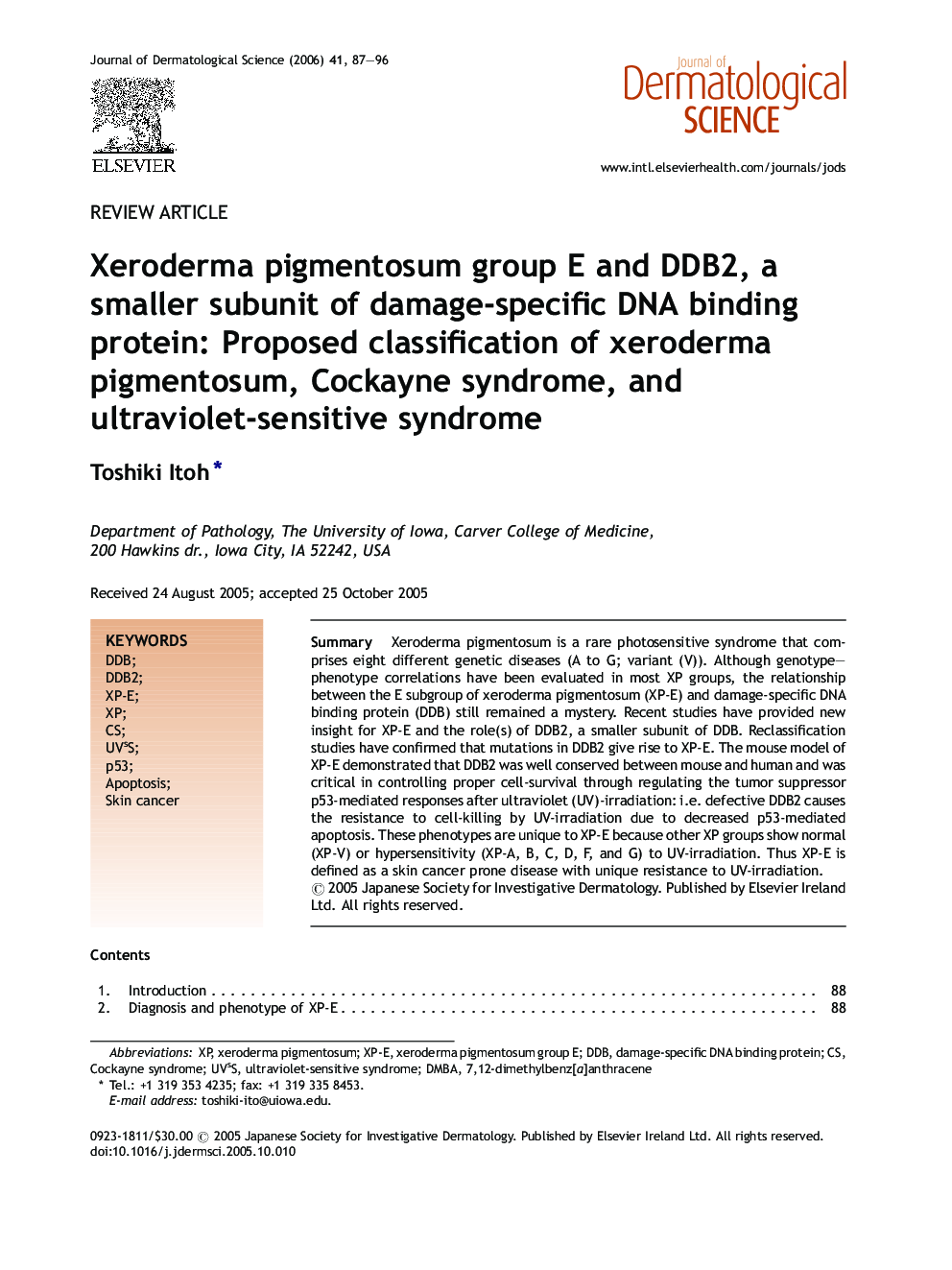| کد مقاله | کد نشریه | سال انتشار | مقاله انگلیسی | نسخه تمام متن |
|---|---|---|---|---|
| 3214386 | 1203287 | 2006 | 10 صفحه PDF | دانلود رایگان |

SummaryXeroderma pigmentosum is a rare photosensitive syndrome that comprises eight different genetic diseases (A to G; variant (V)). Although genotype–phenotype correlations have been evaluated in most XP groups, the relationship between the E subgroup of xeroderma pigmentosum (XP-E) and damage-specific DNA binding protein (DDB) still remained a mystery. Recent studies have provided new insight for XP-E and the role(s) of DDB2, a smaller subunit of DDB. Reclassification studies have confirmed that mutations in DDB2 give rise to XP-E. The mouse model of XP-E demonstrated that DDB2 was well conserved between mouse and human and was critical in controlling proper cell-survival through regulating the tumor suppressor p53-mediated responses after ultraviolet (UV)-irradiation: i.e. defective DDB2 causes the resistance to cell-killing by UV-irradiation due to decreased p53-mediated apoptosis. These phenotypes are unique to XP-E because other XP groups show normal (XP-V) or hypersensitivity (XP-A, B, C, D, F, and G) to UV-irradiation. Thus XP-E is defined as a skin cancer prone disease with unique resistance to UV-irradiation.
Journal: Journal of Dermatological Science - Volume 41, Issue 2, February 2006, Pages 87–96